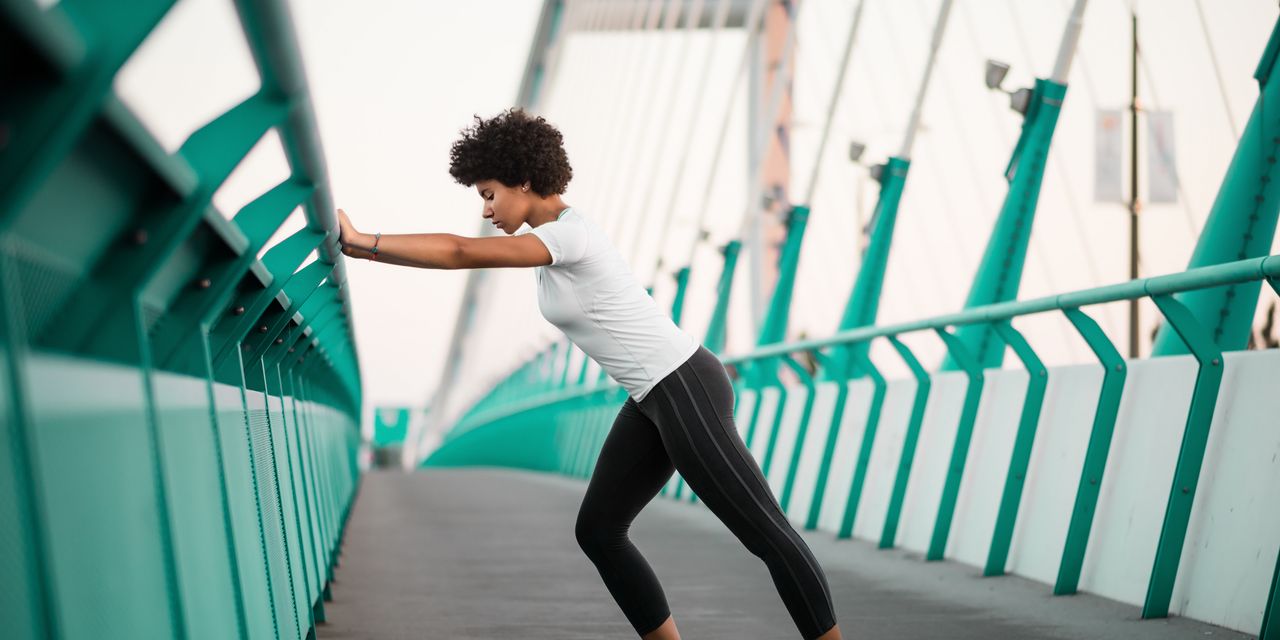Months spent working from home—not far from the pantry and couch—have left many feeling sluggish and not ready to ease into life as pandemic restrictions lift. But making small, simple adjustments to your fitness and eating routines can change how you look and feel. Here are seven steps to try as summer arrives and life edges back to normal.
Weigh yourself first thing every day
When numbers on the scale tick up for a few days, it often is time for healthier eating, said Naomi Parrella, a physician at Rush University Medical Center in Chicago who specializes in weight loss. Don’t panic over one or two days of readings because the numbers can fluctuate due to water weight. “You can change what you’re eating so you don’t keep creeping up,” Dr. Parrella said.
For people anxious about stepping on a scale, it may be less stressful to check waist circumference by wrapping a soft tape measure around the area just above your belly button where your hip bones start. “If that’s expanding, it shows you are gaining weight in a place that only gains weight if it’s metabolically unhealthy,” she said.
Create your own 30-day challenge
Weight-loss plans that dictate what you can eat for weeks at a time have a significant drawback: Most are too restrictive to maintain over the long run. Sarah Pelc Graca, an online weight-loss coach in Novi, Mich., helps clients tailor a 30-day plan that is realistic enough to follow long-term. Such programs help many people sustain healthier habits, she said, with measures such as eating more vegetables, sleeping at least seven hours a night and getting in at least 7,000 steps a day.
Don’t snack if you aren’t hungry
During the pandemic, people snacked due to boredom, stress and emotional reasons, which made it easy to put on weight, Ms. Pelc Graca said. Look for signs that your body really is hungry, such as a growling stomach or a long stretch since your last meal. If you can’t tell why you want to snack, Ms. Pelc Graca suggests drinking a glass of water and waiting 10 minutes to see if the feeling disappears.
Add spices to conquer cravings
Spices including cinnamon and peppermint may help diminish feelings of hunger, according to some studies, said Julia Wojnar, an accountability adviser for Masala Body, a weight-loss company. To deal with cravings, Ms. Wojnar tells clients to replace sugar in their coffee with cinnamon or to wind down with peppermint tea. Cinnamon also may reduce blood sugar in some Type 2 diabetes patients, Ms. Wojnar said.
Chew your calories, don’t drink them
Fruit-filled smoothies and coffee drinks can pack a double punch: They have hidden sugar and are less filling than food you chew, said William Yancy Jr., director of the Duke Lifestyle and Weight Management Center in Durham, N.C. “If you drink calories, your body doesn’t recognize those calories as well, and we don’t exactly know why,” Dr. Yancy said. Eating fruit or drinking coffee with zero-calorie sweeteners makes it easier to fill up without taking in too many calories, he said.
Breathe deeply to relieve stress
Covid-19 stress profoundly affected the quality of our breathing, making it hurried and shallow, Dr. Parrella said. She advises taking time during the day to take long “deep belly breaths”—ones where placing a hand on your stomach makes it rise. “It tells the brain you are safe and that it’s OK to be calm and settles the body down,” she said. There’s no need to sit still for a while, she said. It’s enough to take a few deep breaths when booting up your computer or making your morning coffee.
Shake up your exercise routine
Even if you exercise regularly, it is possible you are seeing diminishing results, Dr. Yancy said. “It’s easy for us to all get stuck in our own exercise routine, but our bodies respond better to change,” he said. “You can become tolerant of your exercise.” He suggests varying your fitness routine with different moves through high-intensity interval training or switching between a fast and slow pace on a run.
Write to Alina Dizik at alina.dizik@wsj.com
Copyright ©2020 Dow Jones & Company, Inc. All Rights Reserved. 87990cbe856818d5eddac44c7b1cdeb8













































